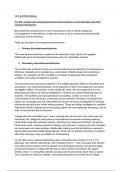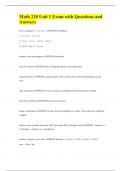Essay
Undertake aseptic techniques to culture microorganisms. Explore factors controlling microbial growth in industrial, medical and domestic applications
- Course
- Institution
Laboratory notebooks recording the practical work done plus observations of practical work by suitably qualified staff. Any parts not covered in practical work can be addressed by research reports. This assignment covers TWO briefs into ONE assignment. ALL criteria of both briefs is covered. ...
[Show more]




